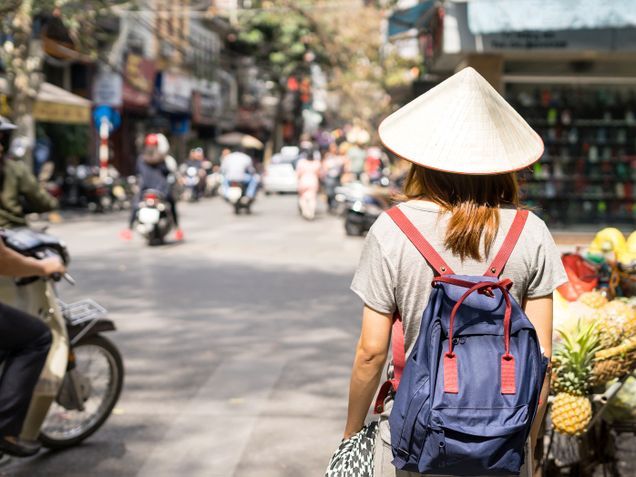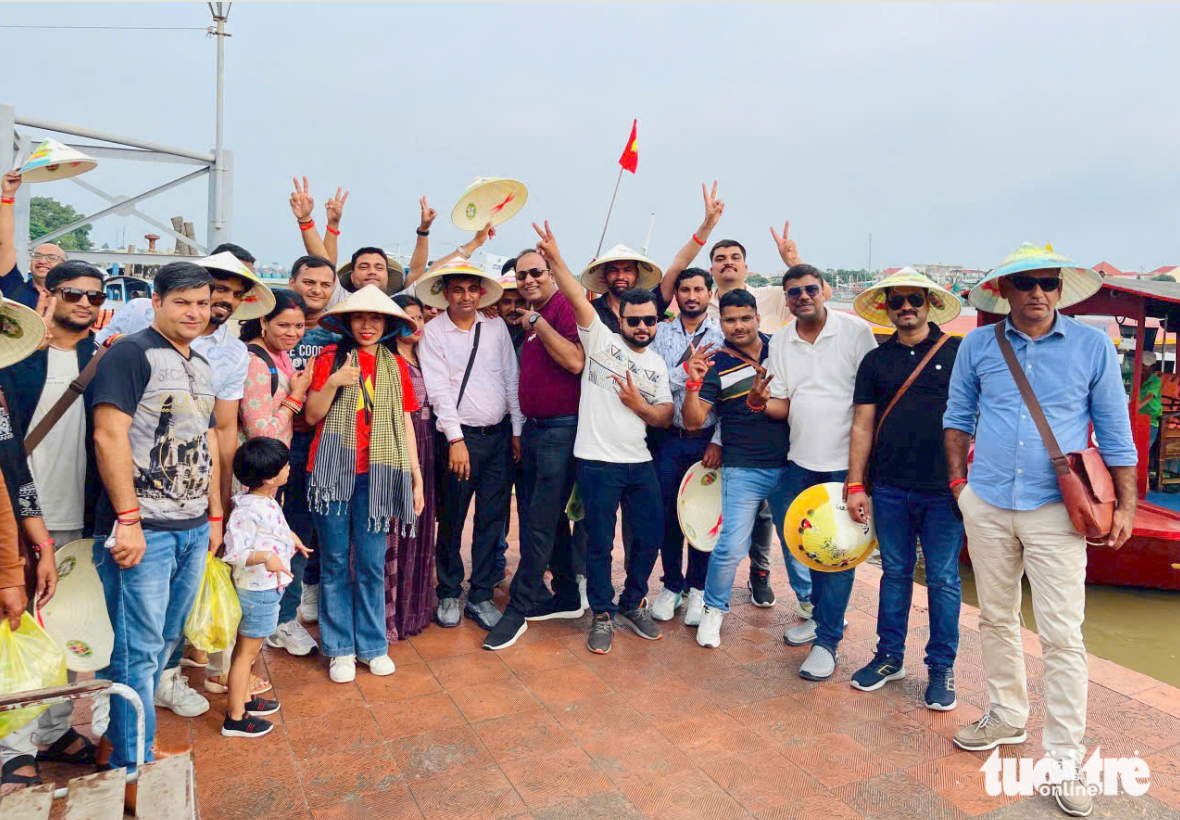-
Borders all over the world were closing. Every time I opened an inbox on social media I was met with pleas to come home. But, come back to what? Stores that lacked the essentials. Friends and neighbors throwing corona parties and refusing to self-isolate.
-
As the number of infect COVID-19 patients continues to rise in North America, Vietnam has managed to limit its numbers. Currently, the number of confirmed COVID-19 cases sits at 258, with zero deaths, 144 recovered, over 106,000 tests administered and scores more in quarantine. Not bad for a country with limited resources.
I arrived in Vietnam on February 6, 2020. At the time North America had yet to feel the effects of COVID-19. My friends and family questioned my stubbornness, wondering why I would spend three months in a country that was in the midst of a pandemic. At the time Vietnam had twelve active cases of COVID-19. For all intents and purposes I was headed into the eye of the storm—the dragon’s den.
When I arrived in Hanoi, COVID-19 was on everyone’s lips. Vietnam had already suspended flights to and from China. A community of ten thousand, less than fifty kilometers from Hanoi, had been quarantined to prevent an outbreak after eleven cases were discovered. Some restaurants and hotels were posting signs banning Chinese tourists, and basically, anyone who looked Asian. As a black American, no one paid me any mind.
Related: Insider story: Life inside a coronavirus quarantine facility of Vietnam
Schools had been closed. Facemasks were not yet required, though the majority of the Vietnamese wore them. Vendors selling food and wares continued to crowd the sidewalks. My hostel popped with newcomers every day. I received daily updates from the visa office and government keeping me abreast of the current situation. However, there was no sense of panic. There was a casual air as my new friends and I relaxed in common rooms talking about everything, including the coronavirus.
My first month in Vietnam was bliss. Staying in hostels, I met backpackers and travelers from all over the world, experienced delicious new foods, learned how to cross streets against impossible odds, and after a visit to Hỏa Lò Prison, a.k.a. Hanoi Hilton, I found myself questioning my American privilege.
During this time the Vietnamese government touted policies of early detection, tracking down those on compromised flights and isolating them. Entire blocks were quarantined. Signs encouraging hand washing and other preventative measures were posted on street corners and buildings. Hand sanitizing stations were affixed to street posts. The Vietnamese government produced the ever-popular hand washing song that went viral. On February 25, 2020, with no new confirmed cases, Vietnam was officially COVID-19 free. The official number of active cases was sixteen.
Due to the cool weather, I headed south. I traveled with ease on night buses, making leisurely stops along the way. In Ninh Binh, I marveled at limestone cliffs and karst formations that sent chills down my spine. The cathedral cave system of Phong Nha filled me with a sense of awed peace. I learned to avoid the hustlers of Hue, fell in love with the beaches of Da Nang, and lost my temper in Nha Trang.

Nha Trang Beach @ Brigette Robinson
On March 6, 2020, after two weeks of no new infections, COVID-19 was back in Vietnam. A European traveler had been sick. As a result, the government began in intense campaign of isolating and quarantining individuals who had flown on the same flight as case #17. Thus began a brief period of xenophobia towards Europeans. Hotels stopped receiving foreigners, cancelling reservations. Restaurants refused service. The racism was bad enough that the Prime Minister, Nguyễn Xuân Phúc, ordered a halt to the behavior. Surprisingly, or not surprisingly due to the penalties that would incur, this worked.
In mid-March, a fourteen-day quarantine was imposed on all who entered the country. A few days later, Vietnam hit the one hundred infected mark. As a result, Vietnam halted foreign travel, suspending visas and essentially closed the border for everyone except residents. Inbound residents were required to quarantine for fourteen days. I was impressed by this hard line. I felt as if the government was going above and beyond to ensure the safety of everyone in the country—including foreigners.
I was in Hoi An when I noticed the shift. All tours and daily activities were cancelled by my hostel. Attractions were inaccessible. Pedestrian walkways were limited. Bars and nightclubs were closed. Events were cancelled. There were rumors of the northern provinces shutting down. There was talk of an active corona case in a nearby hotel. I began to wear my facemask when I ventured outside of my hostel. Vietnam Airlines canceled my international flight home.

It’s incredibly pedestrian-friendly, and is considered one of the safest cities in Asia.
Hoi An ancient town. @ Shutterstock
Borders all over the world were closing. Every time I opened an inbox on social media I was met with pleas to come home. But, come back to what? Stores that lacked the essentials. Friends and neighbors throwing corona parties and refusing to self-isolate. Spring break in Florida. Mardi Gras in New Orleans.
On March 19, 20202, the state department sent out a bulletin encouraging citizens to return home. I watched in horror as the wave of facemask-less Americans who heeded the call were crammed like cattle into ill-prepared airports for hours waiting to reach checkpoints that lacked social distancing and hand sanitizer.
I watched in awe the COVID-19 numbers continued to raise in Italy and knew that North America was next. I warned my friends and family back home to take precautions, to limit their interactions and to wear facemasks. They thought I was being overly vigilant and feeding into the hype. It’s just another flu. In fact, more people die of influenza. More people die from car accidents. More people die of heart disease. I saw the writing on the wall.
I continued with my travels, caught a night bus to Da Lat, a mountainous town known for its waterfalls, San Francisco-esque streets and French inspired architecture. While checking into my hostel, for the first time since arriving in Vietnam, I was asked to provide information regarding my travel for the past fourteen days, my flight information into the country, and my plan for continued travel. There is a notable lack of tourists. I continue to read about travelers wanting to leave but facing a lack of flights due to border restrictions. I suppose I’ve missed my window.

Da Lat is the capital of Lam Dong Province in Vietnam.
On April 1, 2020, the government instituted two weeks of social distancing. Restrictions were placed on inter-province travel. Checkpoints were instituted. Transportation options like taxis and buses were limited. Residents were directed to stay inside. This directive was put in place to prevent a further outbreak from occurring. I’m appreciative of this effort.
Due to social distancing, my hostel has stopped receiving guests. It is currently just me and another guest, who has been here as long as me. The hostel owner and her reduced crew have taken extraordinarily good care of us. The hostel restaurant serves up a nice mix of Vietnamese and western food. My typical meal costs less than six dollars. My dorm room is a comfortable four dollars a night. I am in very good hands. And I am safe.
As the number of infect COVID-19 patients continues to rise in North America, Vietnam has managed to limit its numbers. Currently, the number of confirmed COVID-19 cases sits at about 258, with zero deaths, 144 recovered, over 106,000 tests administered and scores more in quarantine. Not bad for a country with limited resources.
Self-isolation is due to end on April 15th. At this time I will pursue a visa extension. Currently my visa is set to expire on May 6, 2020. My hope is that the government will take pity on me and other travelers who remain in this country. The hospitality I have received in Vietnam has been bar none. I have felt welcomed in every place that I have visited. And, most importantly, I am safe.

Author and a Local Man @ Brigette Robinson
By Brigette Robinson | Brigette Robinson is originally from Chicago, Illinois, but currently reside in Vancouver. Canada. The opinions expressed here are her own.




